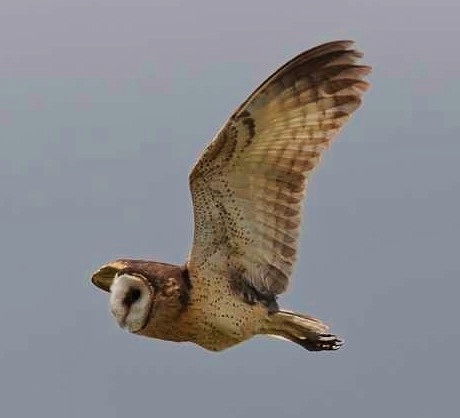 |
| Photo by Per Holmen (Per’s Birding Pages) |
Common name:
African grass-owl (en); coruja-dos-campos (pt); effraie du Cap (fr); lechuza de El Cabo (es); Afrika-graseule (de)
Taxonomy:
Order Strigiformes
Family Tytonidae
Size:
These birds are 34-42 cm long and weigh 330-520 g.
Range:
This African species is patchily distributed from Ethiopia and Cameroon south to South Africa.
Habitat:
The African grass-owl is marshes and tall grasslands, but also in dry savannas and scrublands from sea level up to an altitude of 3.200 m.
Diet:
These nocturnal hunter mostly take small mammals, namely moles, rats and mice, hedgehogs, hares and bats, frogs, small birds ans insects such as beetles and termite alates.
Breeding:
African grass-owls breed in November-July. The nest is an unlined depression in the ground, placed among rank grass, with multiple tunnels through the grass branching out from the nest so that it can move around undetected by predators. The female lays 2-6 eggs, which she incubates alone for 32-42 days, while receiving food from the male. The chicks are fed by both parents and start leaving the nest 4-5 weeks after hatching, but only become able to fly after another 2-3 weeks and achieve independence 1 month later.
Conservation:
IUCN status – LC (Least Concern)
This species has a very large breeding range and is reported to be locally common to uncommon. The population is suspected to be in decline owing to ongoing habitat destruction and degradation through ploughing, grazing, draining and burning.







